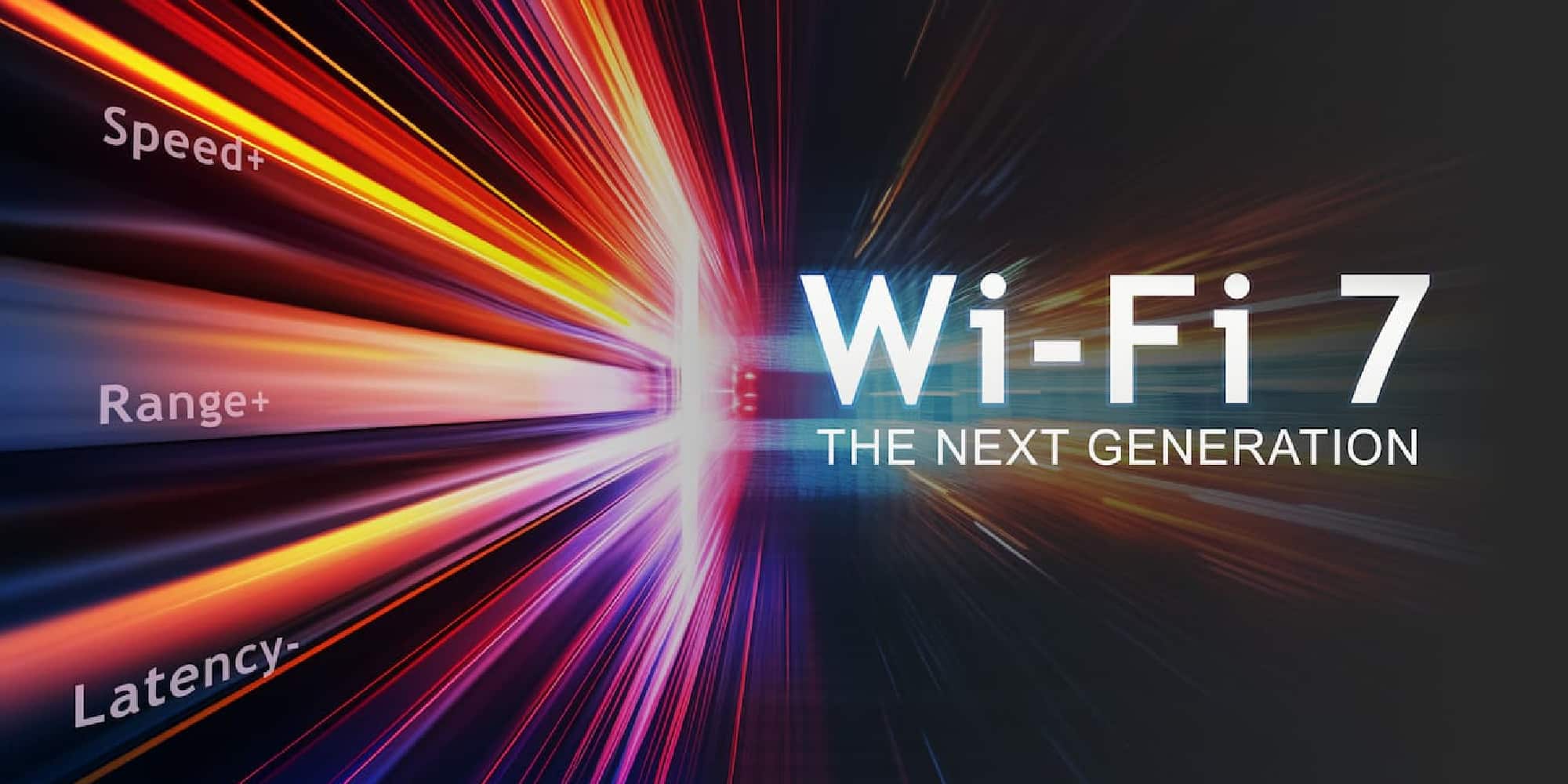
As technology continues to advance at a rapid pace, the evolution of wireless connectivity remains at the forefront of innovation. Wi-Fi 7, the seventh generation of Wi-Fi, is set to redefine wireless networking standards with its forthcoming IEEE standard 802.11be, known as Extremely High Throughput (EHT). Unlike its predecessors, Wi-Fi 7 is built to be backward compatible while introducing new capabilities aimed at reducing latency, increasing throughput, and enhancing stability and efficiency. As the digital landscape continues to evolve, Wi-Fi 7 is poised to meet the ever-growing demands of modern connectivity and mobility.
Understanding Wi-Fi 7
Wi-Fi 7, also known as IEEE 802.11be, is the next generation of Wi-Fi technology designed to deliver faster speeds, increased capacity, and improved reliability compared to previous standards. Building upon the foundation laid by its Wi-Fi 6 and 6E predecessors, Wi-Fi 7 aims to deliver faster speeds, lower latency, and increased capacity to meet the growing demands of modern applications and devices. With advancements in technology and infrastructure, Wi-Fi 7 promises to deliver a more robust wireless experience and revolutionize the way we connect and communicate in a hyperconnected world.
New Features and Capabilities
Wi-Fi 7 introduces a range of new features and capabilities to enhance wireless networking performance:
-
Multi-Link Operation (MLO): Enables multi-link connectivity across bands and channels, boosting throughput, reducing latency, and improving reliability.
-
Flexible Channel Utilization: Utilizes preamble puncturing to bypass channels experiencing interference, allowing for the use of wider channels amid disruptive signals.
-
320 MHz Wide Channels: Realizes significant throughput enhancements with expanded channel bandwidth and additional capacity provided by the 6 GHz spectrum.
-
4K-QAM: Achieves 20% higher transmission rates than 1024 QAM, further enhancing data transfer speeds.
-
Enhanced Spectral Efficiency: Improves OFDMA with multiple resource units to a single device, enhancing overall spectral efficiency.
-
Backward Compatibility: Ensures compatibility with earlier Wi-Fi generations across legacy bands, including 2.4 and 5 GHz, as well as with Wi-Fi 6E within the 6 GHz band.
-
Increased Data Rates: Offers faster data transfer rates to meet the demands of high-bandwidth applications.
-
Greater Range: Drives regulatory adoption of Automated Frequency Coordination (AFC) and Standard Power in the 6 GHz band, further extending its range.
Differences from Wi-Fi 6 and 6E
Wi-Fi 7 distinguishes itself from previous generations, including Wi-Fi 6E and Wi-Fi 6, through several key factors:
-
Frequency Band: While Wi-Fi 6 operates in the 2.4 GHz and 5 GHz bands, Wi-Fi 6E extends into the 6 GHz band, providing additional spectrum for faster and more reliable wireless communication. Wi-Fi 7, on the other hand, operates across all three bands—2.4, 5, and 6 GHz—with theoretical speeds of up to 46 Gbps.
-
Efficiency and Performance: Wi-Fi 6 introduced multi-user efficiency capabilities such as OFDMA, optimizing data traffic flow and enhancing network efficiency. Wi-Fi 6E, with its additional spectrum in the 6 GHz band, offered faster data transmission speeds and reduced interference. Wi-Fi 7 introduces Multi-Link Operation (MLO), allowing client devices to connect across multiple channels and bands simultaneously, further enhancing network flexibility and performance.
Impact on the Future
The introduction of Wi-Fi 7 heralds a new era of connectivity, empowering businesses, consumers, and industries with unparalleled speed, performance, and reliability. From smart homes and connected devices to enterprise networks and industrial applications, Wi-Fi 7 promises to unlock new possibilities and drive innovation across various sectors. With faster speeds and lower latency, Wi-Fi 7 can facilitate real-time communication, enable immersive experiences, and support emerging technologies such as augmented reality, IoT, and 5G integration. With expectations of over 233 million Wi-Fi 7 devices by 2024 and over 13 million enterprise-grade Wi-Fi 7 access points by 2027, Wi-Fi 7 is poised to revolutionize wireless connectivity.
Want to Learn More about Wi-Fi 7?
Wi-Fi 7 represents a significant advancement in wireless technology, promising to meet the growing demands of modern connectivity and mobility. With its advanced features, capabilities, and potential impact, it is set to redefine wireless networking standards for years to come. As businesses and consumers embrace Wi-Fi 7-enabled devices and infrastructure, we can expect to see a new era of innovation, productivity, and connectivity unfold, shaping the future of wireless networking. Take action today and Contact a ValuTrack Technology Specialist to learn more about this transformative technology.

Explore Network Infrastructure Solutions
A properly installed network gives you the ability to see the location, motion, and state of enterprise assets, people, and transactions. Our team can help you seize the power of today’s technology to convert the physical into digital intelligence ultimately, changing your outlook and your outcomes.
We’re Here to Help
Contact us to Start the Modernization Process
Looking for more information about a specific technology solution? Feel free to ask us about pricing, data sheets, and demos, or schedule a free in-person/online consultation for strategic guidance from one of our experts.
Fill out the inquiry form or contact us to start the process.









